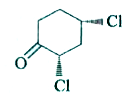Which of the following protists do not have multicellular representatives?
Chrysophyta
Phaeophyta
Rhodophyta
All of the above include multicellular representatives
The correct Answer is:D
To determine which of the following protists do not have multicellular representatives, we will analyze each option provided in the question: chrysophyta, pheophyta, and rhodophyta.
1. Understanding Chrysophyta:
- Chrysophyta is a phylum that includes diatoms and yellow-green algae.
- It consists of both unicellular and multicellular organisms.
- Therefore, chrysophyta does have multicellular representatives.
2. Understanding Pheophyta:
- Pheophyta, also known as brown algae, are characterized by their greenish-brown color due to pigments like fucoxanthin.
- They are complex forms of algae commonly found in marine environments.
- Pheophyta also includes multicellular representatives, such as kelp.
3. Understanding Rhodophyta:
- Rhodophyta refers to red algae, which are known for their distinct red color due to pigments like phycoerythrin.
- They are eukaryotic algae and lack flagella and centrioles.
- Rhodophyta includes multicellular representatives as well.
4. Conclusion:
- After analyzing all three options, we find that chrysophyta, pheophyta, and rhodophyta all have multicellular representatives.
- Therefore, the answer to the question "Which of the following protists do not have multicellular representatives?" is that all of the above include multicellular representatives.
Final Answer:
All of the above include multicellular representatives.
- Chrysophyta is a phylum that includes diatoms and yellow-green algae.
- It consists of both unicellular and multicellular organisms.
- Therefore, chrysophyta does have multicellular representatives.
- Pheophyta, also known as brown algae, are characterized by their greenish-brown color due to pigments like fucoxanthin.
- They are complex forms of algae commonly found in marine environments.
- Pheophyta also includes multicellular representatives, such as kelp.
- Rhodophyta refers to red algae, which are known for their distinct red color due to pigments like phycoerythrin.
- They are eukaryotic algae and lack flagella and centrioles.
- Rhodophyta includes multicellular representatives as well.
- After analyzing all three options, we find that chrysophyta, pheophyta, and rhodophyta all have multicellular representatives.
- Therefore, the answer to the question "Which of the following protists do not have multicellular representatives?" is that all of the above include multicellular representatives.
All of the above include multicellular representatives.
Topper's Solved these Questions
- BIOLOGICAL CLASSIFICATIONBOOK - ICSECHAPTER - BIOLOGICAL CLASSIFICATIONEXERCISE - Test Your Progress (Fill in the blanks with appropriate words)
42 Videos
- BIOLOGICAL CLASSIFICATIONBOOK - ICSECHAPTER - BIOLOGICAL CLASSIFICATIONEXERCISE - Test Your Progress (State whether the following statements are true or false)
31 Videos
- ANIMAL KINGDOMBOOK - ICSECHAPTER - ANIMAL KINGDOMEXERCISE - Ncert Exercises (Differentiate between )
11 Videos
- BIOLOGICAL CLASSIFICATION FIVE-KINGDOM CLASSIFICATIONBOOK - ICSECHAPTER - BIOLOGICAL CLASSIFICATION FIVE-KINGDOM CLASSIFICATIONEXERCISE - REVIEW QUESTIONS ( Long answer type questions )
10 Videos
Similar Questions
Knowledge Check
Which of the following groups do not have the antennae?
AcrustaceaBmyriapodaCinsectaDarachnidaWhich of the following do not have same dimensions ?
AForce, surface tensionBAngle, shear strainCPressure, stressDPlanck,s constant, angular momentumWhich of the following compounds do not have the plane of symmetry?
A B
B C
C D
D
Which of the following do not have stomata
View SolutionWhich of the following do not have stomata
View SolutionWhich of the following sets do not have homologous organs:
View SolutionWhich of the following pairs of structures do not represent isomers?
View SolutionWhich of the following kingdoms contains multicellular organisms that ingest their food ?
(a) Protista
(b) Animalia
(c) Plantae
(d) Fungi
View Solution
